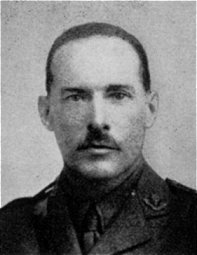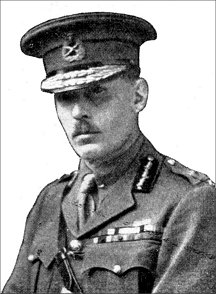In July, 1904, he was promoted Major and in that rank he was posted to the 2nd Battalion in Ceylon in 1905, serving with them at that station, Ahmednagar and Jhansi. As Second-in-Command he came home with the Battalion to Aldershot in 1913. In 1914 he was promoted Lieut.-Colonel and proceeded to Burma to take command of the 4th Battalion.
Then came the First Great War 1914-18. He mobilized and commanded the 4th Battalion which formed part of the 88th Infantry Brigade, 29th Division. He commanded the Battalion at the historic landing at Helles in Gallipoli, and through various actions on the Peninsula in which the 4th Battalion fought with such distinction.
In 1915 he was appointed Brigadier-General and assumed Command of the 88th Infantry Brigade, taking an active part in both the Suvla and Helles evacuations which were so successfully carried out. The 29th Division, after a re-fit in Egypt, was moved to the Western Front.

Lieut.-Col. D. E. Cayley
(later Major-General)
After his retirement in 1919 General Cayley lived at Hook in Hampshire, where he was Chairman of the Board of Guardians, Basingstoke Area; he was also Chairman of the Hook Branch British Legion from 1922-36. He then moved to reside at Yateley, where he was elected President of the Yateley Branch British Legion. On retirement due to ill-health, he was made a Life President. During the Second World War 1939-45 he was Senior Air Raid Warden Yateley District. In 1947 he was elected a Life Governor of Clifton College.
He was married Miss Jessie Gibbonat at Kandy, Ceylon, when serving with the 2nd Battalion Worcestershire Regiment. He had one son, "Dick," who joined the Royal Navy and became a distinguished Submarine Officer, losing his life during the Second World War, but not until he had so bravely earned the D.S.O. and two bars.
General Cayley was a first-rate Regimental Officer, and very much liked and respected by all Ranks.

Major-General D. E. Cayley